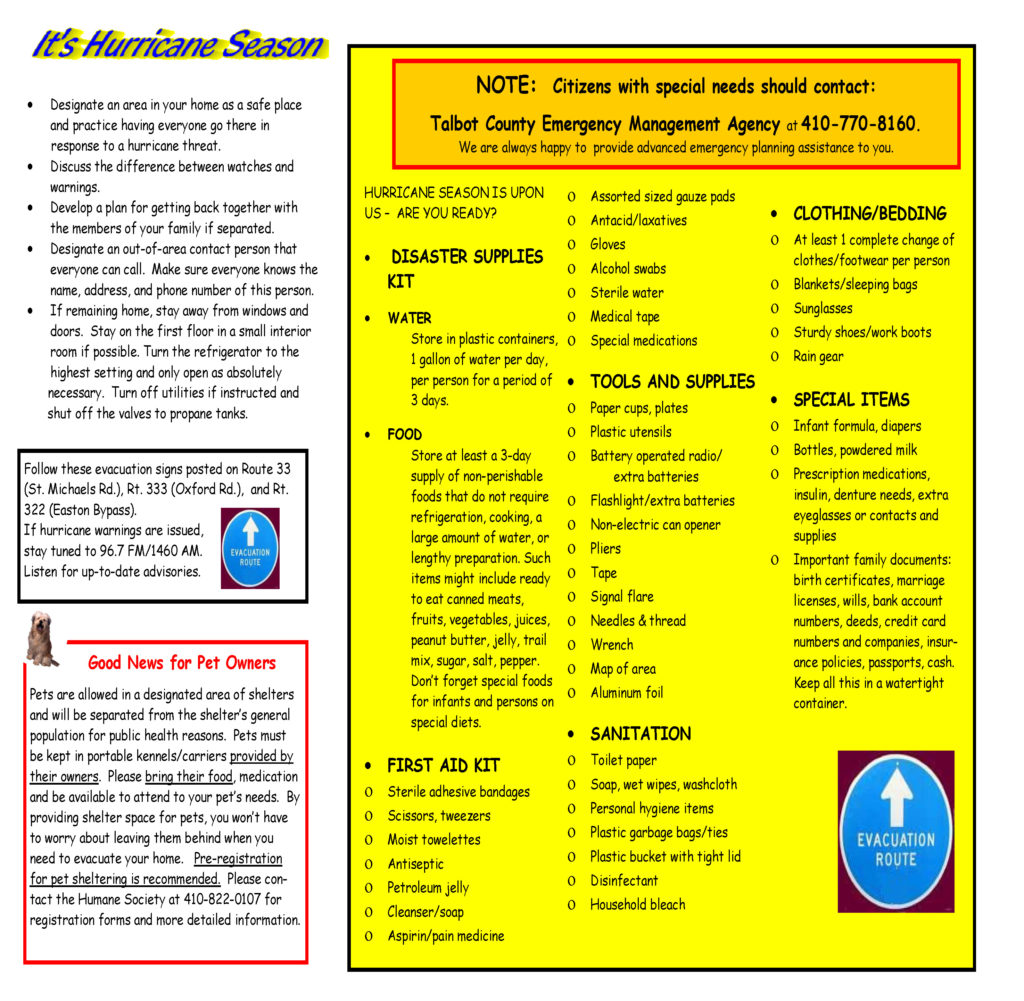
Make a Plan!
When a major storm is coming, stay informed by following NOAA Weather radio or your local news channels for updates. In addition, make sure to obey all orders if requested to evacuate by the authorities. Follow these 10 hurricane and storm preparation steps to keep your home and loved ones safe before disaster strikes.
- Make a plan
If evacuation is necessary, turn off all utilities and follow community disaster preparedness plans. Select a common meeting place or single point-of-contact for all family members. If you have pets, have a plan for their evacuation as well. - Secure the exterior
Trim large trees and shrubs and bring all outside patio furniture, potted plants, bikes and toys indoors. If necessary, secure outdoor sculptures with burlap or blankets tied with rope. - Install storm shutters
Protect windows, doors and skylights with appropriate shutters or impact-resistant glass. You can nail pieces of plywood to window frames as last-minute protection. - Check wall hangings and art
Make sure wall hangings are secure and take notes about your art collection and any existing damage. Make sure that art hung on outside walls are taken inside, and elevated off the floor. - Move your cars
Move cars to higher ground or park them in your garage against the garage doors. Do not park under trees, power lines or in low-lying areas. - Power up
Fill your car’s gas tank, charge your cell phone, test your generator and have plenty of fuel ready in case of power outages. - Unplug appliances
Move appliances and household fixtures away from exterior doors and window openings. Store them in cabinets or interior closets. - Store important documents
Keep important documents, such as legal papers, birth certificates, marriage license, financial papers and insurance policy information, as well as valuables such as jewelry, in a safety deposit box or in a bolted safe in an interior closet in your home. - Prep an emergency kit
Gather flashlights, a portable radio, extra batteries, non-perishable food, bottled water, cash, blankets, clothing and toiletries. - Identify a shelter room
This enclosed area should be on the first floor, in the central part of the house with no windows. Avoid all unprotected windows and doors until the storm passes.
Be Informed! Build a Kit!


Do you “Know Your Zone”?
What is it? Know Your Zone is a new color-coded interactive map you can use to determine which storm evacuation zone you live in based upon your street address.
How will it help you? Knowing your zone will help you avoid unnecessary evacuation travel, thereby reducing highway congestion, easing overcrowding at local storm shelters and boosting public safety.
How do you use it? Simply click the ‘Find Your Zone” button. Enter your address on the map and view your color-coded evacuation zone. Emergency managers will work with local media and use social media and other tools to notify residents of impacted zones and what to do to stay safe.
Hint: In the Town of Oxford you are in the RED ZONE – and would most likely be the first called to evacuate.
When you are visiting other states you can find this information for the state your are visiting and be informed in the event an evacuation is called.
What information should you keep close at hand?
Your Cell Phone! And make sure it is charged.
Consider getting a battery operated cell phone charger.
Phone numbers, emergency, friends, and family… anyone you might need.
Your prescriptions – should always be organized and ready to grab in an emergency.
A small amount of cash – ATMs don’t work during a power outage.
Why should you consider setting up a Facebook Page?
The Town of Oxford keeps this page up to date with information you may need to know, but in the event of an actual emergency, the best way to access urgent information is on the Town of Oxford, MD and the Talbot County Emergency Services Facebook page.
